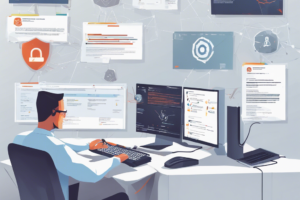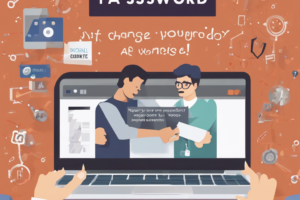
The Importance of Sharing Information about Cyber Attacks
Sharing information about cyber attacks yields numerous benefits for individuals, organizations, and the cybersecurity community. It enables early detection of cyber threats, as organizations can learn from the attacks others have faced and proactively defend against similar tactics. This collaborative approach enhances incident response capabilities, raises community awareness about evolving threats, and facilitates trend analysis. By sharing attack information, vulnerabilities can be quickly identified and mitigated, compliance with regulatory requirements can be achieved, and global collaboration against cybercrime can be fostered. Additionally, this shared knowledge contributes to threat intelligence enhancement, drives security innovation, and reduces the duplication of efforts in combating cyber threats.
1. Promoting Early Detection of Threats
The process of sharing information about cyber attacks isn't just beneficial; it's vital. One of the significant benefits of this process is encouraging the early detection of threats. The more organizations share about the attacks they've faced, the more can be learned about recognizing and defending against these threats preemptively. Highlighting such attacks' tactics, techniques, and procedures provides a blueprint to avoid similar dangers.
2. Improving the Incident Response Process
Sharing of information and collaboration can significantly enhance an organization's ability to react to cyber-attacks. This pool of shared experience can yield invaluable insights and strategies to deal with future threats, thus enhancing an organization's overall incident response capability.
3. Augmenting Cybersecurity Community Awareness
Increased sharing of cyber attack information raises alertness within the cybersecurity community. This collective knowledge about the evolving risks of the digital world strengthens its defense against various existing and emerging threats.
4. Aiding in Trend Analysis
The shared information about cyber attacks is a treasure trove of data for identifying current trends and patterns. Understanding the evolving threat landscape helps organizations to revise and enhance their security measures.
5. Speeding Up Vulnerability Mitigation
Information exchange about cyber attacks can expedite the process of pinpointing and rectifying vulnerabilities. If organizations know weaknesses exploited in other systems, they can swiftly apply patches and security updates, solidifying their systems.
6. Facilitating Compliance with Regulations
In specific industries, reporting cyber attack information is not an option but a regulatory requirement. Compliance with such regulations assures that the organization follows the best cybersecurity practices, thereby maintaining a certain standard of preparedness against digital threats.
7. Fostering International Collaboration
Cyber threats are not confined to borders. This necessitates global information sharing and cooperation in the fight against cybercrime. A synchronized global approach ensures effective defense against threats that span across countries and regions.
8. Enhancing Threat Intelligence
The collective shared information enriches the global pool of threat intelligence. This comprehensive intel boosts the effectiveness of threat intelligence platforms, making them immeasurably valuable to all organizations that utilize them.
9. Spurring Security Innovation
Sharing knowledge of different types of cyber attacks can stimulate innovation in cybersecurity solutions. This collective intelligence can lead to the design of next-gen technologies, tools, and defense strategies to combat emerging threats.
10. Avoiding Duplication of Efforts
Learning from one another's experiences helps organizations avoid repeating mistakes that have already been made. This coordinated strategy optimizes resource utilization across organizations and helps develop swift, efficient responses to threats.
Sharing cyber-attack information is critical in building a resilient and collaborative cybersecurity ecosystem. It empowers organizations to defend collectively against an ever-evolving threat landscape. Through shared experiences, the cybersecurity community can develop more effective strategies for incident response, vulnerability mitigation, and overall security posture improvement. This collective wisdom helps adapt to new threats and inspires the development of innovative cybersecurity solutions, making the digital space safer for everyone involved.

Alejandro Rodriguez, a tech writer with a computer science background, excels in making complex tech topics accessible. His articles, focusing on consumer electronics and software, blend technical expertise with relatable storytelling. Known for insightful reviews and commentaries, Alejandro's work appears in various tech publications, engaging both enthusiasts and novices.
Follow us on Facebook







